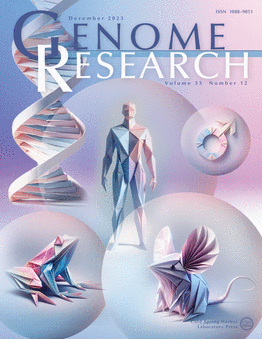Multi-tissue single-nucleus RNA-seq reveals cell type-specific regulatory patterns of alternative polyadenylation in pigs
IF 5.5
2区 生物学
Q1 BIOCHEMISTRY & MOLECULAR BIOLOGY
引用次数: 0
Abstract
As an important post-transcriptional modification mechanism, alternative polyadenylation (APA) plays a crucial role in gene regulation and phenotypic diversity. While extensive studies have explored the global APA landscape using bulk RNA-seq data, in-depth analyses of APA events at the single-cell level remain limited - particularly in farm animals. In this study, we constructed a comprehensive APA atlas for 261 cell types across 19 porcine tissues based on single-nucleus RNA sequencing (snRNA-seq) data. This analysis revealed tissue- and cell type-specific patterns of APA. We found that many genes displayed a clear correlation between the average length of 3' untranslated regions (3'UTRs) and expression levels in various cell types, with most showing a negative correlation. Early cell types within the developmental lineage, such as spermatogonia and satellite cells, displayed longer 3'UTRs, especially for spermatogenesis, where 3'UTR lengths showed significant decreasing trends along the differentiation trajectory. Notably, we identified that variable 3'UTR lengths in the CD47 and GPD1 genes might be critical regulators during spermatogenesis and myogenesis, respectively, potentially through modulation of RNA-binding protein and miRNA binding sites. Furthermore, the SNP rs323354626, located in the 3'UTR of the CD47 gene, significantly impacts gene splicing and is strongly associated with reproductive phenotypes. Additionally, we observed that neuronal cells generally possess longer 3'UTRs – a pattern conserved across humans, mice, fruit flies, and pigs. Together, these findings enrich the single-cell atlas of pigs by adding a layer of post-transcriptional regulation to the existing gene expression data, highlighting the significant role of cell type-specific 3'UTR lengths in cell commitment and complex trait regulation.多组织单核RNA-seq揭示了猪选择性聚腺苷酸化的细胞类型特异性调控模式
作为一种重要的转录后修饰机制,APA在基因调控和表型多样性中起着至关重要的作用。虽然广泛的研究利用大量RNA-seq数据探索了全球APA景观,但在单细胞水平上对APA事件的深入分析仍然有限-特别是在农场动物中。在这项研究中,我们基于单核RNA测序(snRNA-seq)数据构建了19个猪组织中261种细胞类型的综合APA图谱。该分析揭示了APA的组织和细胞类型特异性模式。我们发现许多基因在不同细胞类型的3‘非翻译区(3’ utr)的平均长度与表达水平之间表现出明显的相关性,其中大多数表现为负相关。发育谱系中的早期细胞类型,如精原细胞和卫星细胞,显示出较长的3'UTR,特别是在精子发生中,3'UTR长度沿分化轨迹呈显著减少趋势。值得注意的是,我们发现CD47和GPD1基因中可变的3'UTR长度可能分别是精子发生和肌肉发生过程中的关键调节因子,可能通过调节rna结合蛋白和miRNA结合位点。此外,位于CD47基因3'UTR的SNP rs323354626显著影响基因剪接,并与生殖表型密切相关。此外,我们观察到神经元细胞通常具有更长的3' utr,这种模式在人类、小鼠、果蝇和猪中都是保守的。总之,这些发现丰富了猪的单细胞图谱,为现有的基因表达数据增加了一层转录后调控,突出了细胞类型特异性3'UTR长度在细胞承诺和复杂性状调控中的重要作用。
本文章由计算机程序翻译,如有差异,请以英文原文为准。
求助全文
约1分钟内获得全文
求助全文
来源期刊

Genome research
生物-生化与分子生物学
CiteScore
12.40
自引率
1.40%
发文量
140
审稿时长
6 months
期刊介绍:
Launched in 1995, Genome Research is an international, continuously published, peer-reviewed journal that focuses on research that provides novel insights into the genome biology of all organisms, including advances in genomic medicine.
Among the topics considered by the journal are genome structure and function, comparative genomics, molecular evolution, genome-scale quantitative and population genetics, proteomics, epigenomics, and systems biology. The journal also features exciting gene discoveries and reports of cutting-edge computational biology and high-throughput methodologies.
New data in these areas are published as research papers, or methods and resource reports that provide novel information on technologies or tools that will be of interest to a broad readership. Complete data sets are presented electronically on the journal''s web site where appropriate. The journal also provides Reviews, Perspectives, and Insight/Outlook articles, which present commentary on the latest advances published both here and elsewhere, placing such progress in its broader biological context.
 求助内容:
求助内容: 应助结果提醒方式:
应助结果提醒方式:


